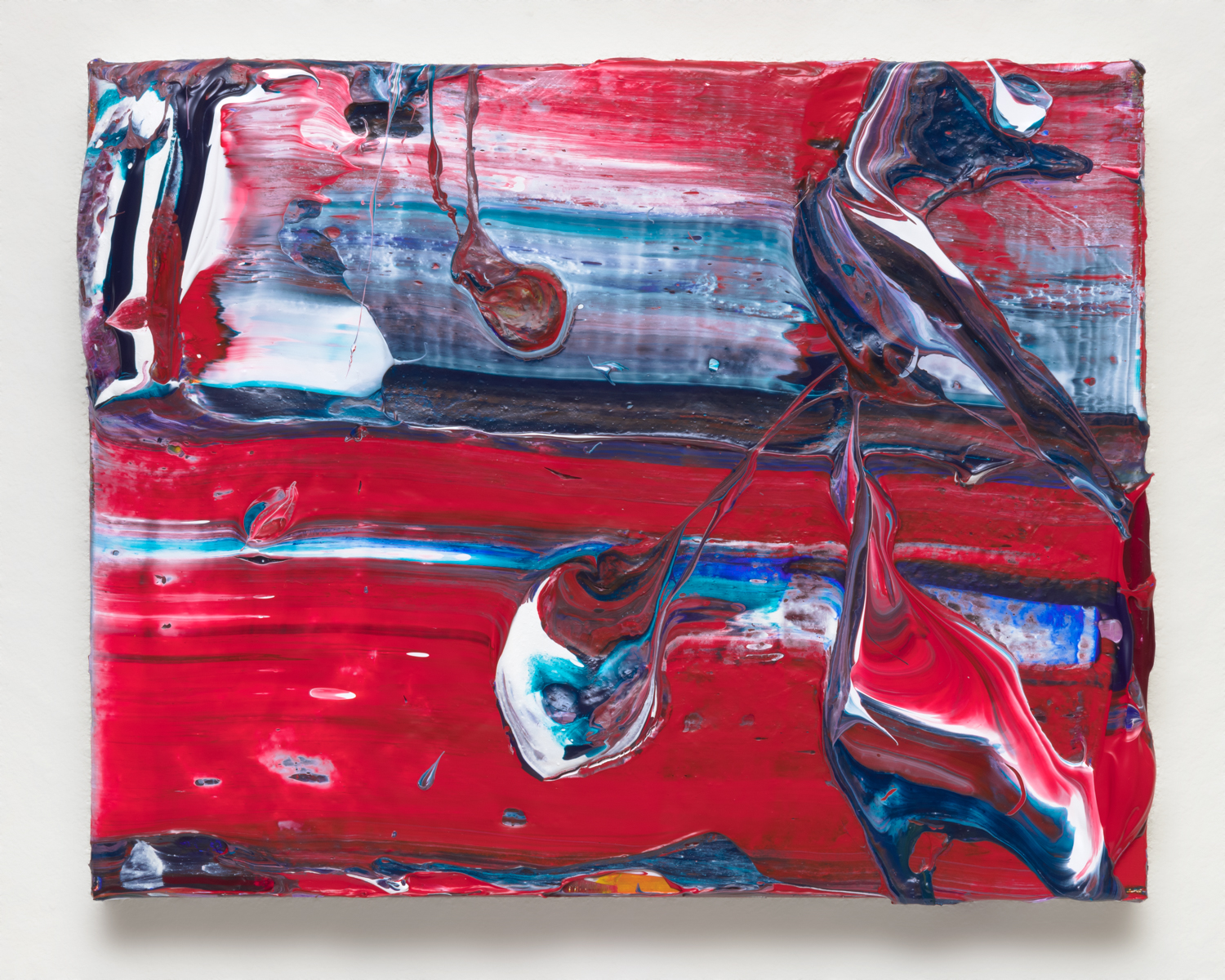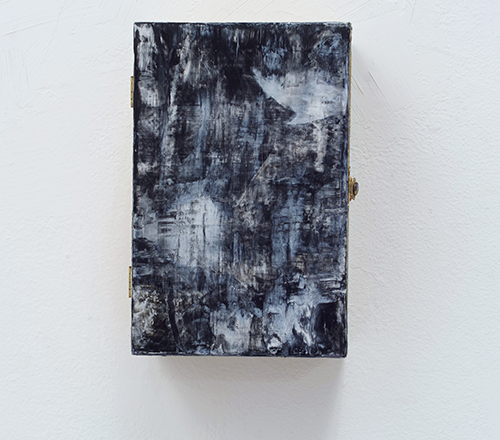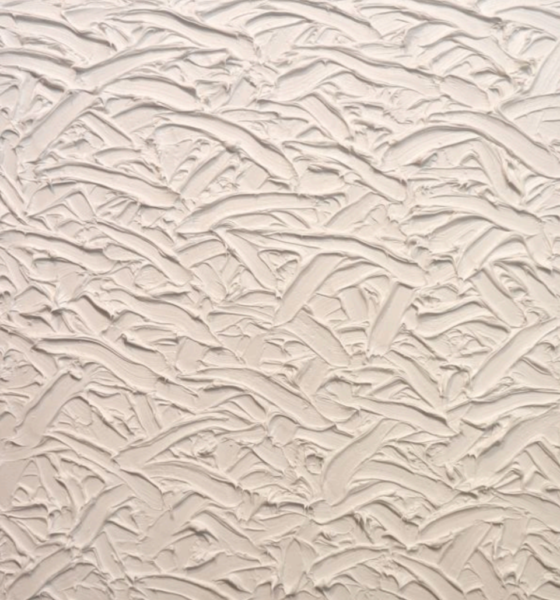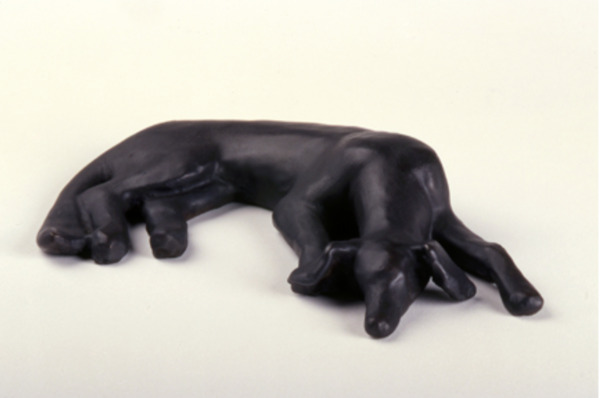
30 Jun Telluride Gallery: “Little Gems,” Jewel of a Show Up in July!
Thursday, July 2, 2020, marks the second Telluride Arts’ Art Walk of the summer season. For the month of July, the Telluride Gallery of Fine Art is featuring a show entitled “Little Gems.” After July 1, the Gallery’s online store will showcase the “Gems” inventory exclusively.
And please note: Until July 5, the Gallery will continue to donate a percentage of its proceeds to the copeprogram.org. COPE has an ongoing partnership with the Navajo Nation and works to transform long-standing and historical health inequalities that lie within most Native communities.
For further information about Art Walk venues, go here.

“Glorious Day,” Michael Reafsnyder, Telluride Gallery. The painter, a former student and friend of the renowned artists James Hayward, inspired the “Little Gems” show. That was indeed a glorious day.
One definition of a gem is something (or someone) highly prized for great its beauty and/or worth.
Something like the work featured for the month of July in the Telluride Gallery’s latest show.
One world-famous work of art based on precious gems is choreographer George Balanchine’s pure-dance triptych titled “Jewel.” The ballets features the green romantic medieval French forest of “Emeralds”; the red Modernist high-energy American urban world of “Rubies”; the wintry white of the grand imperial Russian classicism of “Diamonds.”
Very dissimilar realms, but each portrayed with the same eye-dazzling mastery.
The same could be said of the Telluride Gallery’s jewel of a show aptly titled “Little Gems.” The venue’s second big exhibition of the summer season showcases the art of eight great creatives, whose work, like precious jewels, is highly prized – and very different one to the next.
“Little Gems” is a case in point that exemplary “art” is imbedded in “heART.”
Co-curator and co-owner of the Telluride Gallery, Ashley Hayward, explains:
“The idea for ‘Little Gems’ came during a call with painter Michael Reafsnyder, who told me that on rare occasion he would make small works for private clients. He affectionately called these special pieces his ‘Little Gems.’ Our Gallery team had been thinking about a fantasy grouping and so we reached out to each artist now in the show with the idea. Almost everyone loved it; only one – and he was key – was unsure.”
James Hayward, who happened to be Michael Reafsnyder’s friend and at first his painting professor, had mixed feelings.
“For the past three years, James Hayward has suffered debilitating back and shoulder pain resulting in his shelving his brushes. That said, I also knew that for a painter like my father, not being able to paint is like not being able to breath. What I wanted most was to see James joyful again. I proposed he consider revisiting his cigar box series, a body of small work made by painting directly onto the cigar boxes he acquired over the years from artist and collector friends. The original series was an homage to his dearly departed friend and teacher, the iconic artist Richard Diebenkorn, who painted cigar box lids as gifts. My father was intrigued by the idea, touched by how this show had emerged because of a comment made by one of his former, beloved students. He agreed to give it a try.”
The process of preparing to work on the boxes purportedly got off to a slow start, but once James Hayward began doing what he loved most, painting again, the works developed very quickly. In fact, the series was completed within two weeks.
“There is real joy in my father’s voice again. He is even talking about continuing to paint. I think the experience of creating work for ‘Little Gems’ brought James back to life, which in his case equates to making art. ”
Even beyond this “Gems” project, Hayward reports that Michael Reafsnyder has been enormously generous with regard to the Telluride Gallery.
“Michael recently started sharing information with us about new artists to consider for the Gallery and has worked as a liaison on our behalf to foster those new relationships. When I thanked him for his selfless, thoughtful action, he paused and replied quite plainly: ‘I learned generosity of spirit from your father.’ That is just one of a number similar, warming stories. There really is a lot of heart in this shining gem of a show.”
James Hayward:

“Smoke:, James Hayward.
James Hayward is a renowned non-objective painter, which means he reshapes the natural world for expressive purposes and derives from, but does not imitate any, recognizable physical subject or impulse. Critic Dave Hickey once described his large-scale abstract paintings as “stepping into liquid.”
Hayward’s monochromatic canvases display the fluid, malleable properties of oil paint, presenting a rich undulating, yet unified field. Like free-form jazz, the artist’s muscular mandalas encourage viewers to lose themselves in the swirls and twirls that shape reflected light.
The artist builds up the juicy surfaces of his work with thick layers of oil paint using a grid structure, treating every mark as equally valid so that the final product appears to have no beginning and no end.
Impasto became Hayward’s signature in the 1980s, but despite the built-up picture planes, his images do not read as being about process alone. They read as a magic trick only a master could pull off: the sheer weight of Hayward’s sensuous, expressive abstractions appear to defy gravity.

“Smoke,” James Hayward.
James Hayward was born in San Francisco in 1943. He received his Bachelor of Fine Arts at San Diego State, then went on to study at the University of California, Los Angeles and the University of Washington, where he received his Master of Fine Art in 1972.
Since his first show solo show in 1976, Hayward has exhibited extensively, particularly in Californi at historically significant galleries such as Claire S. Copley Gallery, Riko Mizuno Gallery and Rosamund Felsen Gallery in Los Angeles, also at Sidney Janis Gallery in New York.

Abstract 214, a departure from the cigar box series, but still, classic Hayward, a canvas pregnant with the infinite.
James Hayward has also had major shows at the LA County Museum of Art; the Museum of Contemporary Art, LA; the Minneapolis Institute of the Arts; and the San Francisco Museum of Modern Art.
He has also received numerous important awards, including a Guggenheim Memorial Fellowship to work in Japan, a trip that triggered the artist’s move from flat blocks of color to thickly painted (mostly) monochromes; a National Endowment for the Arts Fellowship; and a Pollack-Krasner Foundation Grant.

“Smoke,” James Hayward.
Emmi Whitehorse:

“Rain 1,” Emmi Whitehorse.
Paul Klee, (1879-1940), is variously known as a Bauhaus master and forefather of Surrealism. Whichever way you turn it, the artist was a tough dude to pin down.
However, one thing for sure: the seemingly cockamamie system of pulsing and bobbing otherworldly creatures that populate Klee’s compositions evolved out of a deeply mystical place and definitely marked some of the very first efforts in the 20th century to embed spiritual content and the subconscious into abstract art. (And Klee was in good company, Kandinksy and Picasso among his peers who worked the same sort of voodoo.)
Wave bye-bye to the faithful representation of people, places and things in the “real” world.
Klee was a lodestar for influential Surrealists such as Miro and and later, for American greats such as Mark Rothko, Robert Motherwell, Kenneth Noland, Theodoros Stamos, Mark Tobey, William Baziotes, Gene Davis, Jackson Pollock, and Adolf Gottlieb. The subtext of the collective body of their work was representing the mystical through art.
Emmi Whitehorse fits neatly into that, ahem, picture.
(With apologies to Sinatra), that’s why the lady is a champ.

“Rain II,” Emmi Whitehorse.
Whitehorse is a painter and printmaker who uses a private language of symbols and memories to make ‘“personal diaries” of her life as an artist of aboriginal heritage. Her textures, colors and compositions conjure the stark vibe of the New Mexico landscape, taking us all on a magical, mystery tour of her ‘hood.
“This land appears in her work simultaneously as very distant and very close up, in atmospheric washes and sharp details and lines. As we see, her paintings are consummate abstractions, welcome in the world of art for art’s sake for their neatly balanced forms and colors. They are also metaphysical views from the Navajo world. As such, they offer to viewers ‘from both worlds’ a glimpse of what art can be,” wrote critic Lucy Lippard.
“As an artist I have intentionally avoided politically oriented subject matter and angst-ridden or physical wrestling with the act of painting itself. To make art, the act of making art must stay true to a harmonious balance of beauty, nature, humanity and the whole universe. This is in accordance with Navajo philosophy. I have chosen to focus on nature, on landscape. My paintings tell the story of knowing land over time – of being completely, microcosmically within a place. I am defining a particular space, describing a particular place. They are purposefully meditative and mean to be seen slowly. The intricate language of symbols refer to specific plants, people and experiences…My work is about and has always been about land, about being aware of our surroundings and appreciating the beauty of nature. I am concerned that we are no longer aware of those. The calm and beauty that is in my work I hope serves as a reminder of what is underfoot, of the exchange we make with nature. Light, space and color are the axis around which my work evolve,” said Whitehorse.

“Rain III,” Emmi Whitehorse.
Light, space, color – and a vivid imagination that grows big and wild in the artist’s fertile interior landscape.
Selected Collections
American Embassies- Japan, Uzbekistan, Slovenia
Denver Art Museum, Denver, CO.
National Museum of the American Indian,
DC
Wheelwright Museum, Santa Fe, NM
Whitney Museum of American Art, New York
Crystal Bridges, Bentonville, Arkansas
Brooklyn Museum, Brooklyn, NY
Arizona State University Art Museum, Tempe, AZ
Minneapolis Institute of Art, Minneapolis, MN.
Gwynn Murrill:

Sleeping Sakuki Dog.
Sculptor Gwynn Murrill has been fashioning animals since the 1970s. As a young woman she studied with some of the giants of the 1960s California art scene, including Tony Berlant of intricately detailed, riotously colorful collage famed, a regular at the Telluride Gallery; also Richard Diebenkorn of the iconic Ocean Park series of geometric abstractions of an urbanscape; and minimalist John McCracken. But it was the beauty and delicacy of Donatello’s “David,” which Murrill saw at the Bargello in Florence when she was a student at the American Academy in Rome, that turned the tide for the formative sculptor.
The splendid bronze portrait of a young David triumphantly stepping on Goliath’s severed head while holding a sword, anchored by the negative space around it, became a kind of muse for Murrill, who believes the space around and between her primary subjects are artistically relevant and very important shapes – and that includes her pedestals.

Donatello’s “David.”
“…Murill’s work often features animals perched or elevated, in some cases upon an element from nature such as a branch, in others on a more abstract form suggesting a slab of rock or a base or stand. In ‘Wolf I on Short Base,’ a wolf appears in mid-step, vigorous yet streamlined. The animal’s elevation on a simple slab calls attention to its worthiness as an artistic subject and to the graceful animal form itself. The majestic ‘Hawk on Branch’ stands out with its sweeping form and naturalistic representation of the bird of prey. From its high perch, with feet steadfastly planted on a small circular platform, we are invited to consider an elevated view and a closer look at the delicacy, grace, and majesty of everyday creatures. Simplicity of form in Murrill’s work is complemented by her careful attention to surface and texture…,” the Gallery explained.
Today, Murrill is best known for her work cast in bronze and for her enduring talent in portraying the essence of her subject in a form that is simultaneously abstract and figurative, fluid in line, elegant, inviting to touch and instilled with vitality from (a) having been caught in an tacit moment of serenity and self-possession; or (b) infused with power to pounce; or (c) to twist and turn and take off at any moment.

Coyote VII.
“It is a challenge to try and take the form that nature makes so well and to derive my own interpretation of it,” the artist explained in an interview with Telluride Inside… and Out.
Since her first solo show in 1972, Gwynn Murrill has been featured in over 50 solo shows and included in more than 80 group exhibitions.
Past accolades include: A National Endowment for the Arts Grant; a Guggenheim Fellowship; a Prix di Roma Fellowship from the American Academy in Rome; and a Purchase Award from the Los Angeles County Museum of Art.
In 2009, Murrill was honored with the Public Art Network’s “Year in Review Award” for her public sculpture and relief commission at The Montana in Pasadena, CA.

Elmo Dog.
Major collections include:
Los Angeles County Museum of Art
Palm Springs Desert Museum
National Museum of Wildlife Art of the U.S.
Jennifer Wolf:

“Isolation #21,” Jennifer Wolf.
Jennifer Wolf grew up in Southern California hiking in the foothills and swimming in the Pacific Ocean. As an undergraduate, she studied art history, an experience that deepened her understanding of the positive impact art has had (and continues to have) on all cultures and civilizations. Perhaps more important today than ever before.
A deep interest in ancient cave paintings triggered an exploration of archaeology and, at one point in her life, Wolf was awarded a grant to spend summer doing fieldwork in Carthage, Tunisia. Discouraged by the prospect of early mornings, intense heat, and the insistent solitary nature of the work of an archaeologist, however, she determined to make art, rather than unearth it. Still sensitivity to place remained an important part of the artist’s creative journey.

“Isolation 2,” Jennifer Wolf.
Further, Wolf’s experience in archaeology had a major impact on her process, inspiring her to focus on the use of natural materials including minerals, rocks, and natural dyes as the source of her pigments and color palette,“oxides and mineral deposits that run deep in the Earth’s crevices.”
The process of mixing her own pigment requires travel to the sources of iron oxides, copper oxides, calcium carbonates and carbon, taking the artist to special sites in France, Peru, Brazil, North Africa, even in her hometown of Ventura, California. The reconstitution of these site-specific minerals into a painting medium is one of the ways in which Wolf communicates her values.

“Isolation,S3,” Jennifer Wolf.
Accolades + Reviews
Anderson Ranch Brooks Scholarship, 2009
Art and Antiques, 2015
Voyage LA, 2019
Kristin Beinner James:

“The paintings I made for this exhibition are a mix of oil, acrylic and wax on various atypical surfaces such as aluminum modeling mesh, jute and cotton interface, the latter a textile commonly used in the garment trade. The neutral tone and open grid-like weave of the material serves well in opening up the construction and ‘operation’ of my painting. I see my work as filters that sift intent and material. Their visually tactile surfaces attempt to grab the eye through a projection of touch.”
To create her images, James extrudes paint and wax through the back of a stretched picture plane. Various tools and speeds of application are employed to render an indexical topography of paint on the front of the painting. A shadow and a record of the action of the back is visible through the front.

‘“Straddling the support from the side, I paint by feel, at times unable to see the resulting image as it emerges. In an auto-poetic response, my painting is complete when the ground is saturated and resists further applications of paint. My aim is for these paintings to hover in-between intention and result, front and back, near and far, inside and outside. Each work presents an other-side, a space of porous boundaries.”

Accolades:
A weekly, “Must See Art” by Amra Brooks in Artforum
“Critics Pick: “Sparkling or Still?”
Newsday, “Embroidering on a Theme.”
Sue Dirksen:
Sue Dirksen examines the amorphous tension between color, space and density, creating in her work a powerful intersection of fluidity and form, which is both inviting and palpable for the viewer.
Though inspired by the natural world, in particular, the element of water, as a latter-day Abstract Expressionist, Dirksen’s work is devoid of recognizable imagery. Hard edges of color quickly turn into swells and washes of varying hues.
Dirksen commands the surfaces and uses a wide array of brushes to move water, paint and medium across a canvas, painstakingly refining with tenacity. Soft and subtle at first, layers in the work open up to reveal churning colors and visceral forms, inviting viewers to sink into the depths of the great unknown and reflect.
‘“I allow intuition to guide me and use the brush as an extension of my arm to bring forth luminosity and potently-hued energy. I am a colorist who meticulously builds up the painting with thin layers of acrylic wash — often hundreds — to capture the varying intensities of light and color. When experienced from different points of view, my paintings pulsate, as the subtleties of light change to create a vibrant, impeccable, living surface,” explained the artist.
Collections + Accolades
De Menil Collection, New York, NY
Kokusai Kanko Co, Sapporo City, Japan
UCLA, Los Angeles, CA
Victoria Huckins

Image, Victoria Huckins
Victoria Huckins was born in Manila, Philippines, but moved to the United States as a young child drawn to art.
That tropism initially led Huckins to pursue careers in fashion and interior design, but soon enough she returned to her early interest in painting. With her diverse roots, including Spanish, Chinese, Japanese and Indian, Huckins’ work embodies elements of those cultures, as well as incorporating experiences from daily life.
Huckins likes to experiment with different mediums. And her immediate surroundings, an old avocado grove in a rural area of northern San Diego, are a great source of inspiration.

Image, Victoria Huckins.
“My art reflects my subconscious thoughts and inspirations. I do not have a preconceived image or idea in mind at the outset. I start most of my paintings with texture, then add color and shapes somewhat at random. That triggers an imaginative process as I react to what is happening naturally within a piece. I develop a more fixed vision of the final piece as work on a piece progresses. Using a variety of materials, including acrylics, oils, pencils, ink, found objects and remnants of magazine articles and books, I then make a more conscious effort to move in a particular direction until I reach what seems to me to be a point of completion.”

Selected Publications:
“50 To Watch – 2016
,” San Diego Home and Garden
Somerset
Metropolitan Home
Michael Reafsnyder:

“Sweet Valley,” Michael Reafsnyder.
Michael Reafsnyder’s abstractions convey a sense of delirious happiness. Although they look like the product of spontaneous gestural painting, his works are, in fact, carefully crafted to convey frenetic energy, each brushstroke, thick swath of acrylic, or vibrant color deftly deployed in the creation of an overall sense of manic exuberance and a love of life.
Conjuring, tongue planted firmly in cheek, the “action painting” of traditional Abstract Expressionism, Reafsnyder’s bright canvases are more playfully sarcastic and confrontational than muscular and testosterone-laden. The artist uses super thick layers of acrylic paint on canvas, arming himself with plastic blades – never brushes – to create deep, saturated abstract pieces that are laboriously well-thought-out and carefully composed.

“Sweet Flow,” Michael Reafsnyder.
“Reafsnyder’s works couldn’t be more contemporary. Comprised almost entirely of aggressive smears of screaming yellow, electric blue, fire engine red, and pure white paint squeezed straight from the tube, these whiplash images make Impressionism’s rapidly dabbed surfaces look like fussy Old Master compositions. Jazzed up by an occasional skid of purple or black, they also recall Willem de Kooning’s classic canvases, whose furious surfaces look as if they’ve been chiseled or carved in some kind of transformative frenzy. For viewers, this simply means that Reafsnyder’s art is a pleasure—even a joy—to behold. After all, it causes you to smile, and then returns the favor by smiling right back at you,” wrote critic David Pagel.
Reafsnyder casually mentions he often feels inspired by that Renoir quote: “Only the painter who knows his business can create the impression that a picture was done in one stroke.”
“I happen to believe that he isn’t only inspired by these words; he is also their contemporary embodiment,” said Maria Brito of the artist.

“Summer Pleasures,” Michael Reafsnyder.
Accolades + Collections:
LA Times, reviews by David Pagel and Christopher Knight
Artforum,”Best of” by David Hickey
Harvard University
Laguna Art Museum
Las Vegas Art Museum
Los Angeles County Museum of Art
Museum of Contemporary Art, San Diego


Pingback:Telluride Art's July 2020 | Telluride Inside... and Out
Posted at 22:01h, 30 June[…] In July, the Telluride Gallery of Fine Art presents “Little Gems,” featuring new and rare small works by Kristin Beinner James, Gwynn Murrill, Sue Dirksen, Emmi Whitehorse, Jennifer Wolf, Michael Reafnsyder, and James Hayward. For deep detail on the show, go here. […]
Lynne wheat
Posted at 21:28h, 02 JulyCan you give me the sizes and the prices of the Jennifer wolf paintings?
Thank you!
Lynne wheat
admin
Posted at 12:29h, 09 JulyPlease call the Gallery at 970-728-3300.